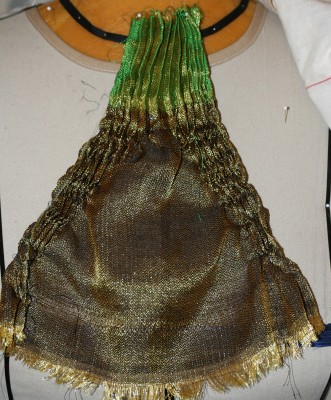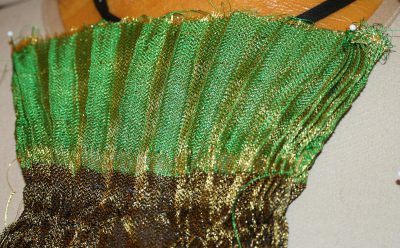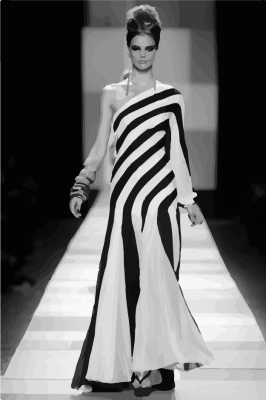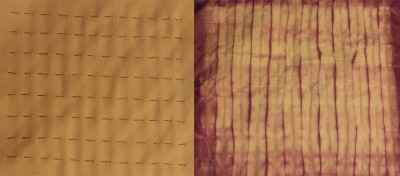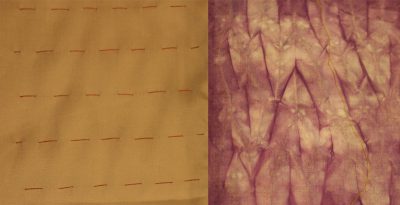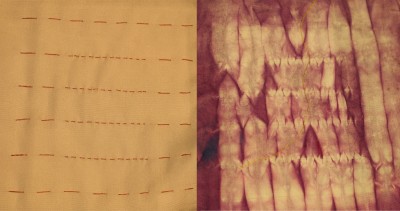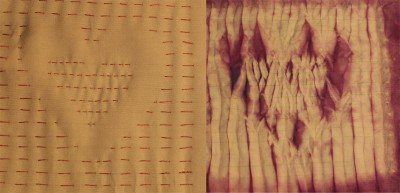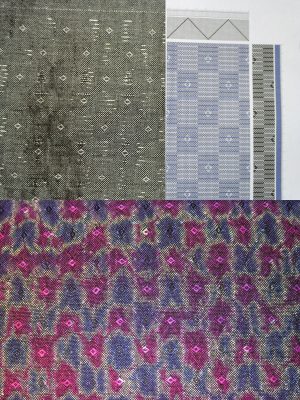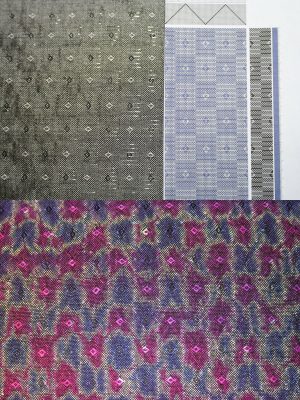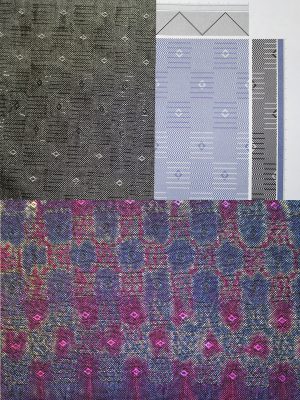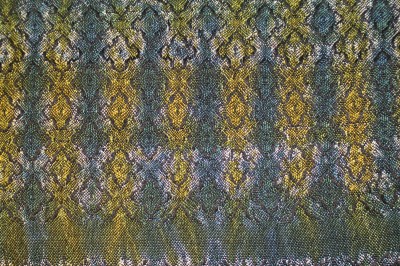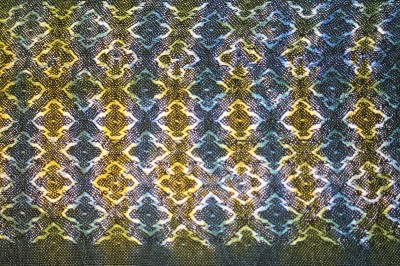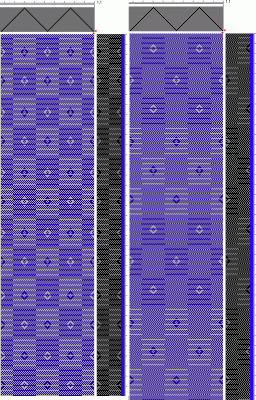The last few days have been spent experimenting with airbrushing and stenciling on the warp, and making a crimped sample of the phoenix fabric. The airbrushing and stenciling weren’t successful – there simply isn’t enough background warp showing to get a visible design – but the crimped cloth turned out interesting. Here is the cloth before crimping:
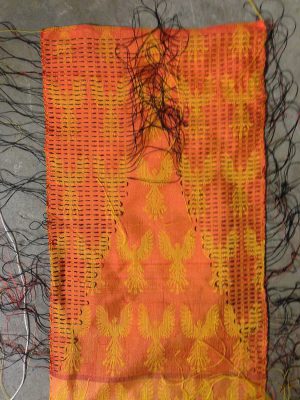
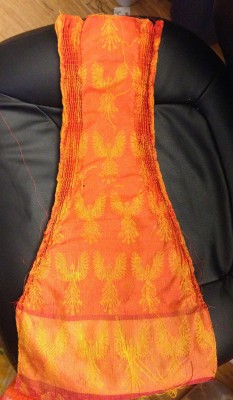
My conclusion from this sample is that I don’t want to use the phoenix crimped cloth in the dress design I’ve chosen; the crimped parts are coming out wider than I’d like, and the crimp distorts the flat portions fabric. Also, the polyester isn’t as drapey as the silk, and it feels like, well, polyester.
Still, the result is pretty, and I might use it if I make a scarf or something, to add visual interest to the scarf. I may use it in my entry for the Pikes Peak Weavers’ Firestorm show.
I also want to play more with airbrushing on warps – it was fun to try (and I got to try out my new airbrush!) but I need more warp showing if I want to get good results. Something to try on another warp, I guess!
